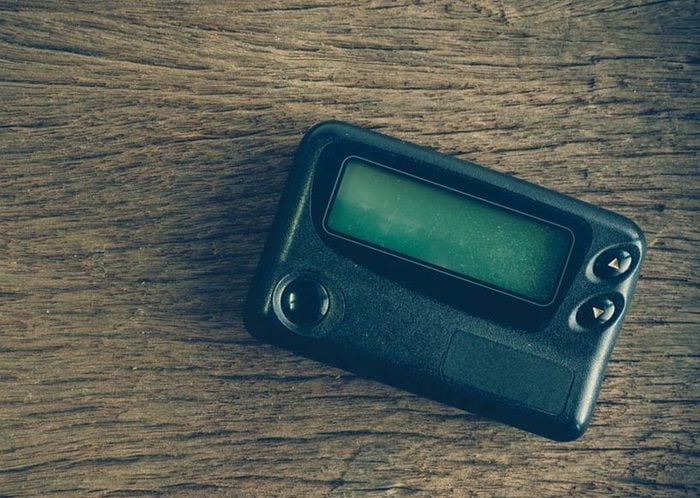This Is Why Doctors Still Use Pagers
Updated: Aug. 29, 2019

The dinosaur technology actually makes a lot of sense.
For all the high-tech equipment doctors get to use, one thing seems pretty archaic: their pagers. Pretty much everyone has a smartphone—or at least a cell phone—but hospitals just haven’t caught up with the times. In fact, nearly 80 percent of hospitals still use pagers, according to a study from the Journal of Hospital Medicine. No, doctors aren’t just stubborn about leaving the dinosaur age of communication. There are some very important reasons hospital staff still use one-way pagers. Read on to find out why, and check out these hospital secrets that every patient should know.
Cell phones and hospitals don’t mix
Hospitals can be dead zones for cell service—and that’s no accident. Some walls are built to keep X-rays from penetrating, but those heavy-duty designs also make it hard for cell phone signals to pass through, says board-certified pediatrician Jarret Patton, MD, founder of DoctorJarret.
Pagers don’t have that same problem, though. They communicate with very high-frequency radio signals; their range is similar to an FM radio broadcast. Plus, unlike cell signals, which only go to the nearest cell tower, pagers signal multiple satellites. “This redundancy increases the reliability of the message getting through because if one tower is down, the others are usually working,” says Shoshana Ungerleider, MD, an internist at California Pacific Medical Center. Now you know why doctors love pagers.
Could cell phones ever work in hospitals?
It’s possible to buy a cell phone signal booster for better reception, but industrial-level products can cost thousands of dollars each. “It is a price many hospitals are unwilling to pay,” says Dr. Patton. “This leaves the job to a pager.”
After all, reliable communication is particularly important during a major emergency, says Dr. Ungerleider. During natural disasters, for instance, cell services can get clogged up and make it hard for most people to send a message. A pager dramatically increases the chances of those messages getting through.
During emergencies, hospital staff might also need to reach hundreds of people at the same time. Instead of creating massive group texts, pagers can easily send a message to hundreds of people at the same time, says Dr. Ungerleider.
Another important factor in an emergency? Battery life. Pagers only need to be charged every week or two, which makes them unlikely to leave doctors hanging without power. “They don’t rely on being charged like a cell phone,” says Dr. Ungerleider. Want the explanation for another doctor quirk? Here’s why doctors seem to have such bad handwriting.
But technical challenges aren’t the only issues. Cell phones also leave doctors open to security breaches. While it would be easy to send confidential patient information over a text, pagers don’t allow that possibility. “They send only numeric messages or basic text messages,” says Dr. Patton. “This way no confidential information can get in the wrong hands as could happen with a cell phone.”
What will come after pagers?
Of course, pagers do have their downsides. They’re clunky, and can only receive messages, giving doctors no option to reply. That’s why some hospitals are moving toward HIPAA-compliant apps that send secure messages.
So, despite the potential risks during major emergencies, Dr. Ungerleider says it would still be more efficient if doctors could get messages when they’re with another patient. “One-way pager communications are frustrating because much of the time we receive text page messages that require a simple answer but we then have to stop what we’re doing … to call them back,” she says. Only time will tell if hospitals stick to the tried-and-true or branch out to new technology. Now that you know why hospitals use pagers, check out these explanations behind 30 little things you’ve always wondered about.